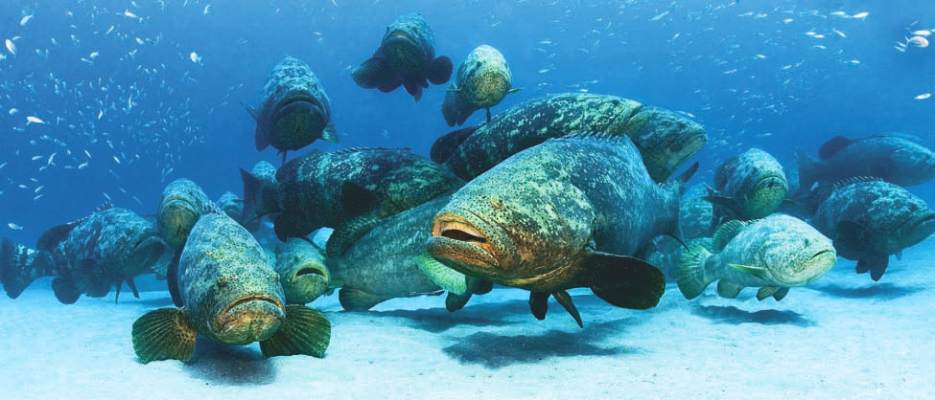Basic HTML Version



www.alertdiver.com
|
31
Opposite: A diver
approaches a sleeping
lemon shark off Jupiter.
Clockwise from upper
left: A green turtle naps
on Breakers Reef off
Palm Beach. A diver
peers through one of
the Castor’s portholes
off Boynton Beach. In
late summer, goliath
grouper gather in large
numbers to spawn on
Jupiter’s wreck sites.
accessibility, the Palm Beach coast is it: Thanks to the area’s
underwater topography, five of the six known goliath-grouper
spawning aggregations off Florida’s east coast are here.
Palm Beach is known as a drift-diving destination; currents
typically bathe area reefs in a life-giving flow while providing
divers with free rides. The currents result from the continental
shelf narrowing to less than six miles wide here, which allows
the Gulf Stream to sweep in closer to the coast than anywhere
else in North America. Running north-south at depths between
45 and 140 feet is a massive ridge composed of ancient lime-
stone. The uneven and undercut bottom contours that these
formations create provides ideal habitat for a wide variety of life.
TurTles
In addition to the goliaths, a large cast of big-ticket marine ani-
mals can be found along this section of Florida. Bold angelfish,
swirling schools of spadefish, jacks, grunts and porkfish are giv-
ens, but the region’s signature attraction is sea turtles.
Sea-turtle encounters are reliable highlights of Palm Beach
dives. Seeing fewer than two turtles per dive at any time of the
year is considered a bad day. The arrival of spring increases
the chances of multiple sightings, with the peak between May
and July. This is largely due to the Palm Beaches being a major
nesting ground for three of the Atlantic Ocean’s five species of
sea turtle — loggerheads (Caretta caretta), greens (Chelonia
mydas) and leatherbacks (Dermochelys coriacea).
Leatherbacks are the hulks of the sea-turtle clan, dark grey
and black in color, 7 feet long and weighing 1,000 pounds
or more when fully mature. Although in-water encounters
with leatherbacks are few, meetings with loggerheads and
greens are commonplace; these turtles take to the reef’s
ledges to sleep off their exhaustion following nights on the
beach laying eggs in the sand. I can’t count how many times
I’ve come across large loggerheads bugged-out with fatigue,
with their heads the only part of their bodies they managed
to get under a ledge. Seeing one of these 350- to 500-pound
ladies in such a peculiar pose is like seeing a Hummer’s failed
attempt at parking in a tool shed.
Hawkbill turtles (Eretmochelys imbricata), recognizable by
their ornate shells and hawkish, hook-shaped snouts, are also
routinely encountered here. Unlike the other species, they do
not nest in Palm Beach, but they are often spotted cruising
the reefs looking for particular sponges to dine on.
sharks and rays
The close proximity of both the Gulf Stream and the deep
Atlantic to the continental shelf creates a relatively narrow
corridor that is traveled by a variety of large, nomadic crea-
tures including sharks. The most commonly seen are nurse
and Atlantic reef sharks, but resident bulls, lemons, black-

